
All categories
Featured selections
Trade Assurance
Buyer Central
Help Center
Get the app
Become a supplier

(42 products available)


















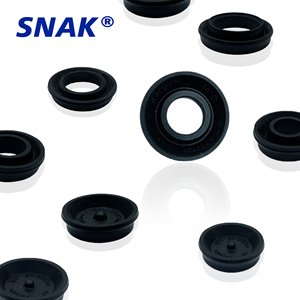



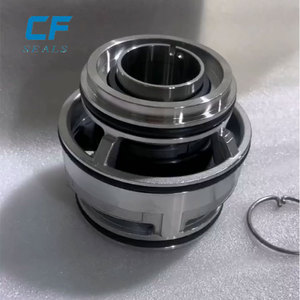


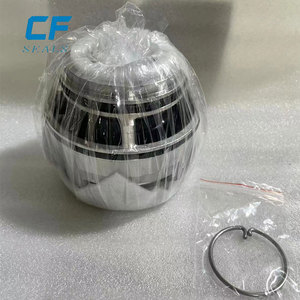

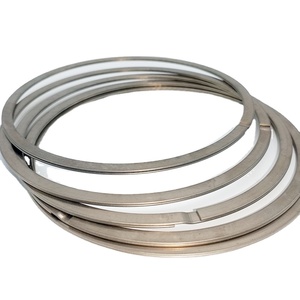

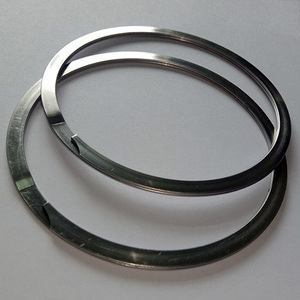
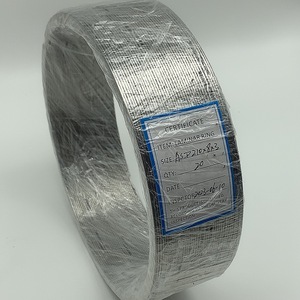


Seal rings are generally used in devices that require high sensitivity due to the presence of a healthy amount of pressure; hence, their utilization in medical devices, aerospace components and instruments, valves, and pumps are seal rings, which help maintain structural integrity under pressure. Laminar seal rings come in different specifications as follows:
PTFE laminar seal rings
These are made from polytetrafluoroethylene and are exceptionally resistant to chemicals, heat, and weather. Because PTFEs are technically weather-resistant and resistant to a wide range of chemicals and thermal decomposition, they can thus be used in medications that have chemical or thermal sensitivities. PTFEs may also be used as backup rings in some configurations for high-pressure environments.
Rubber laminar seal rings
Laminar seal rings made from rubber like Nitrile or Butadiene-acrylonitrile elastomers. Nitrile rubber has a very high resistance to petroleum-based fluids and thus fit seals in hydraulic systems used in aerospace engineering. Ethylene-propylene diene monomer rubber: EPDM is very resistant to heat, ozone, and water and can therefore be found in components of seals in medical devices and automotive parts.
Metal laminar seal rings
Packing seals of this type are made from durable metal and are applied when high temperatures and harsh working environments are encountered. Metal laminar seal rings are used where extreme pressures and temperatures are required, for instance, in jet engines and other aerospace components. Seals are constructed from alloys with great corrosion resistance and tensile strength, for example, titanium and nickel alloys. In addition, they are often used in welding or brazing in order to secure their permanent placement.
Ceramic laminar seal rings
Ceramic-based seal rings offer superior wear resistance and thermal stability. Commonly found in high-performance applications in the automotive and aerospace industries, these seals are ideal for extreme environments such as jet engines. However, while extremely durable, the brittleness of these seal rings limits their use in applications subject to high-flexing or bending stresses.
Laminar seal rings based on elastomers
This seal ring is made of different kinds of elastomers: fluorocarbon rubber, silicone, and neoprene. These are used where this degree of chemical and thermal stability is required for seals in valve assemblies, hydraulic pumps, aerospace components, and high-pressure vessels. These seals function well in extreme thermal or high-temperature environments. For sealing applications requiring flexibility and compliance, these seals are used.
Seal rings are of importance in a variety of industrial fields where sealing, containment, or insulation is vital as described in the following applications:
Aerospace and defence
Seal rings are used to maintain structural integrity and safety. Metal laminar seal rings in particular are used in this industry to contain fuels, gases, and fluids within their respective components and resist high temperatures, pressures, and corrosive environments, for instance, jet engines. In this industry, seal rings are applied in hydraulic systems, fuel lines, and pressure vessels. Maintaining high reliability and safety is crucial to this industry; therefore, the application of seal rings ensues such maintenance of reliability and safety.
Automotive
Seal rings are applied in engines, transmissions, braking systems, and fuel injectors. Rubber and PTFE laminar seal rings are used to contain fluids, gases, and make sure that components remain resistant to vibrations and mechanical stresses. Seal rings are of importance in this industry for automotive safety, performance, and durability, as well as ensuring that vehicles operate normally without leakage and excess emissions.
Oil and gas
The seal rings in this industry are applied to improve sealing and safety, especially in high-pressure situations. Metal seal rings are used in offshore drilling equipment, pipes, and reactors. Laminar seal rings are also used to prevent leakage. Seal rings are necessary to prevent leakage of hazardous materials, which would otherwise cause catastrophic environmental repercussions or pose a health hazard to individuals.
Medical devices
The medical profession holds seal rings very dear, especially in pieces of equipment that require high precision, such as manometers, blood infusion pumps, and ventilators. PTFE and elastomeric laminar seal rings are used in this industry because they are biocompatible, easy to clean, and resistant to various chemicals. In this space, poor sealing integrity causes malfunctioning equipment that can result in customer safety; hence, seal rings are of paramount importance in this industry due to high-customer safety.
Marine
In this industry, laminar seal rings help protect vessels and equipment from the corrosive effects of saltwater. Rubber and metal laminar seal rings are used in ship engines, propellers, and ballast systems. They are used to prevent the entry of water into components, thus avoiding electrical and mechanical failures while also ensuring the longevity of the maritime equipment. This industry also concerns itself with the longevity of seal rings due to the harsh operating environment.
The main function of laminar sealing rings is to provide effective sealing to contain and control the flow of fluids, gases, and even granulated solids in between spaces of the associated machinery. The following are the typical salient features of laminar seal rings:
Seal rings must be properly installed to perform the sealing function optimally. Here is a general procedure outline for the installation of laminar sealing rings:
The long laminar sealing rings can be ensured with proper maintenance. Here are general guidelines for maintaining laminar sealing rings:
Regular inspection
Inspection of the equipment on a regular basis is important to detect any HTS in laminar seal rings. Industrial seal rings should be inspected frequently for erosion, cracking, or any manifestation of wear and tear as these are known to affect performance. This helps detect problems before they snowball into more serious malfunctions. Moreover, inspection schedules should coincide with routine maintenance of equipment to maximize efficiency while sustaining optimal sealing effectiveness.
Proper cleaning
The cleaning of seal rings is to be done after the cleaning of their surrounding area. It is vital not to use abrasive or harmful cleaning agents. Using excess grease, dirt, or chemical residue on the ring can compromise its integrity. Soft cloths or non-abrasive tools are required for cleaning. Additionally, practices like routine cleaning during maintenance checks further extend a seal's lifespan because it reduces wear from adverse environmental conditions.
Avoid contamination
The contamination of seal rings during their installation, equipment operation, or maintenance is easily avoidable, but it is crucial in increasing their longevity. Working in controlled conditions and using clean materials and tools is a basic rule. For example, hands or gloves should be protected from dirt, oils, and other contaminants. Besides, by preventing exposure to contaminants such as chemicals, dust, or residues, ring seals will continue to perform optimally without risk of early failure.
Proper handling during installation
Handling laminar seal rings with care is a must if their integrity is to be maintained throughout the process. When installing the ring seal, do not bend, stretch or manipulate the ring in such a way that it would cause material fatigue or potential cracks on it. Proper-sealed rings will continue to form correct seals if proper care is taken during installation.
Replace worn parts promptly
Seal rings that have worn out should be replaced immediately. Worn-out seal rings can lead to equipment malfunctioning. Prolonged use of deteriorated seals may result in damages of not only the equipment but also the contained substances being affected or endangering safety. Further, once signs of wear are observed during routine checks, arrangement for the replacement of the ring seal should be made as soon as possible, possibly with minimal disruption to operations and without compromising performance or safety.
Material selection
The type of material that laminar seal rings are made from affects its durability, wear and tear, and level of resistance to chemical and mechanical influences. Manufacturers do extensive research to select materials that have great elasticity, tensile strength, and chemical resistance in order to make a product that will endure extreme conditions for a long acceptable time without eventual leakage or breakdown. This attention to detail stakes the claim that safety is observed, not compromised, in the context of that which needs to be contained within machinery.
Precision manufacturing
The quality of sealing rings is proportionate to the accuracy with which they are made. Sophisticated machines help curtail variations in size and shape that could compromise the seal's integrity. Close tolerances ensure that the ring fits like a glove in its groove and creates a perfectly tight seal with no spaces for leakage. Safety risk mitigation is thus enabled through quality control to ensure the rings perform reliably in hazardous environments.
Compliance with industry standards
Like other sealing rings, laminar sealing rings conform to standards set by regulatory authorities in their industries, such as aerospace, automotive, and pharmaceuticals. These standards encompass their performance specifications, testing protocols, and material safety. External certification provides an additional criterion of assurance regarding reliability and safety. Such compliance also ensures that the specific operational needs of highly regulated industries are met and public concern over risk is allayed.
Regular testing and inspection
Inspection during the manufacturing process and after the production of laminar seal rings includes stress tests, fatigue tests, and real-life simulations. Leak tests, pressure tests, and wear tests are examples of quality assurance measures that are preventative of safety hazards identified early on in the process. Through rigorous testing that anticipates failure modes, manufacturers effectively mitigate risks associated with using malfunctioning products in mission-critical applications.
Maintenance guidelines
The importance of maintenance for safety and longevity is not lost on manufacturers, who provide detailed care and replacement instructions. Their seal ring products possess a long and safe life, in part due to the correct and timely maintenance of those rings by users. Furthermore, they have partnered with service professionals and users to provide preventive safety and reliability that help avert dangerous failures and the risks they pose.
A: The primary purpose of a laminar seal ring is to provide a durable and effective seal for highly pressurized environments. These rings contain and control the flow of liquids, gases, and even granular solids between spaces within machinery. Manufacturers use them in a variety of industries, including aerospace, oil and gas, and chemical processing.
A: Laminar seal rings comprise rubber, metal, ceramic, and PTFE due to the high resilience, elasticity, compression set resistance, chemical, and electrical insulation of these materials. The material used depends on the operating conditions and the containing medium.
A: The benefits of laminar seal rings include their ability to withstand extreme operating conditions such as temperature, pressure, and aggressive chemical environments. The design provides a uniform load distribution to help prevent material wear and fatigue. This helps prolong its lifespan and reliability, thus making it operationally effective.
A: Laminar seal rings are designed not to damage mating surfaces. They cause no damage if made from softer materials like elastomeric compounds or specially formulated rubber.
A: One can ensure longevity by regular maintenance and cleaning, avoiding excess force during installation, using proper lubrication, and preventing exposure to harsh chemicals.